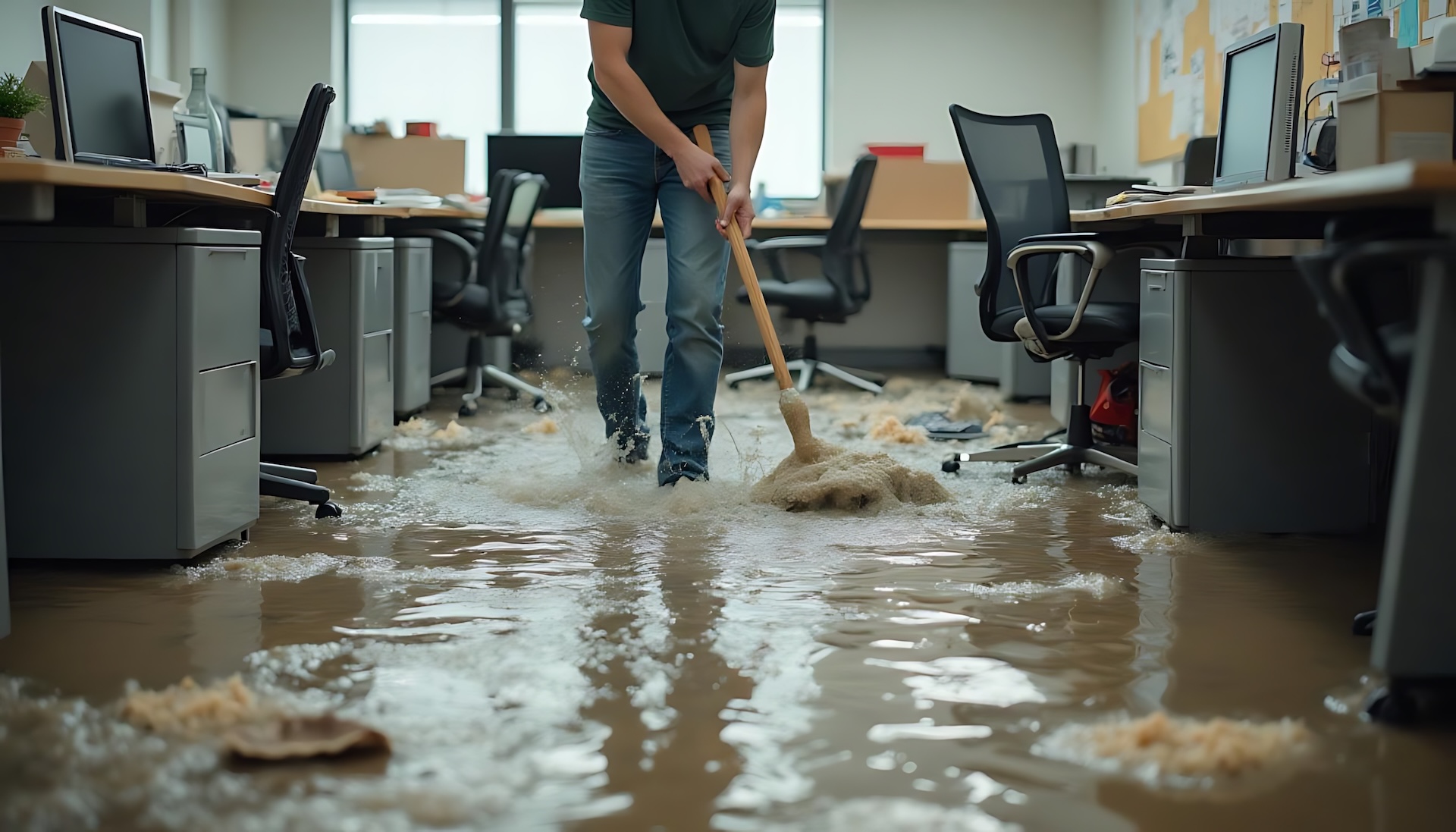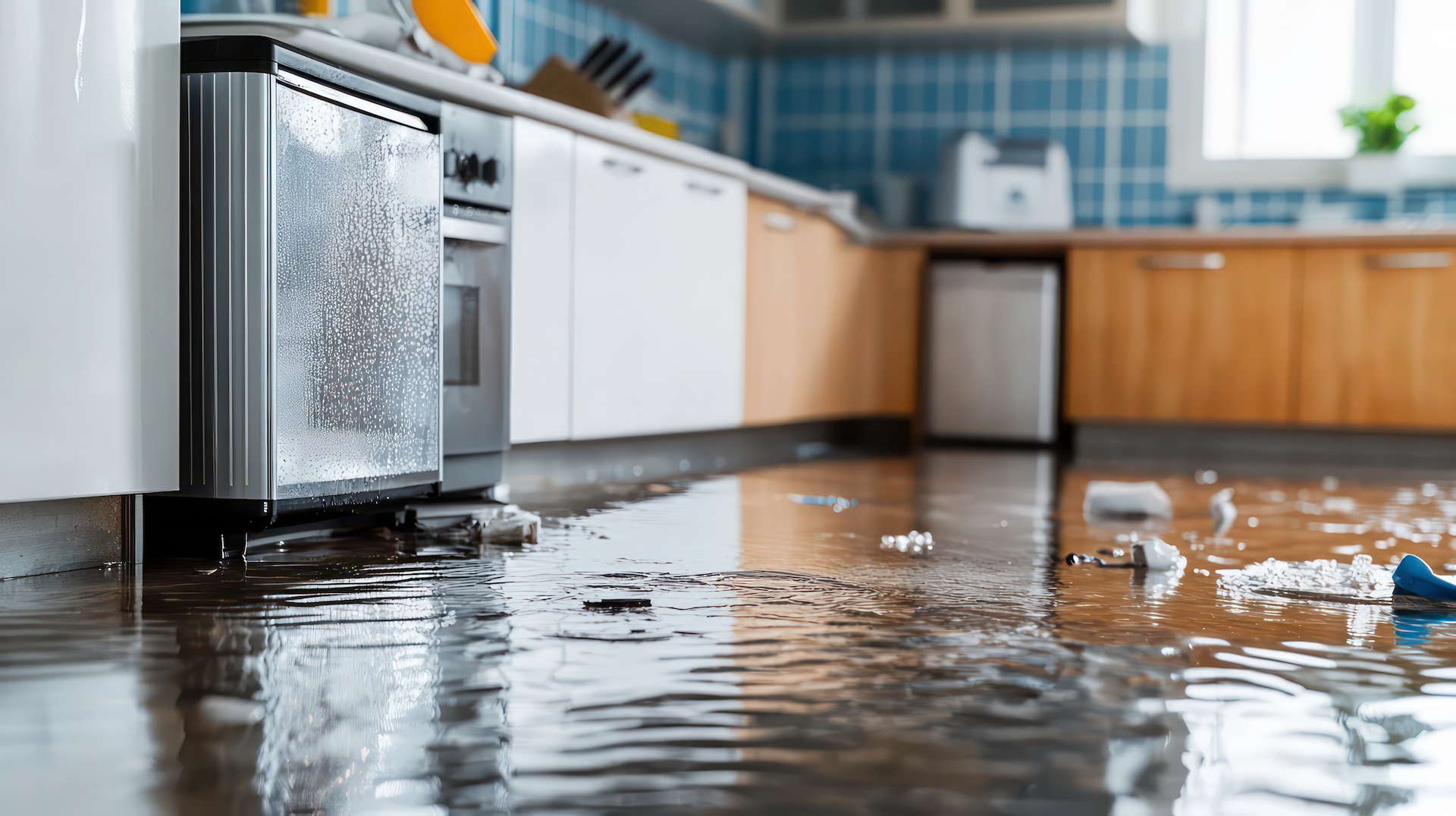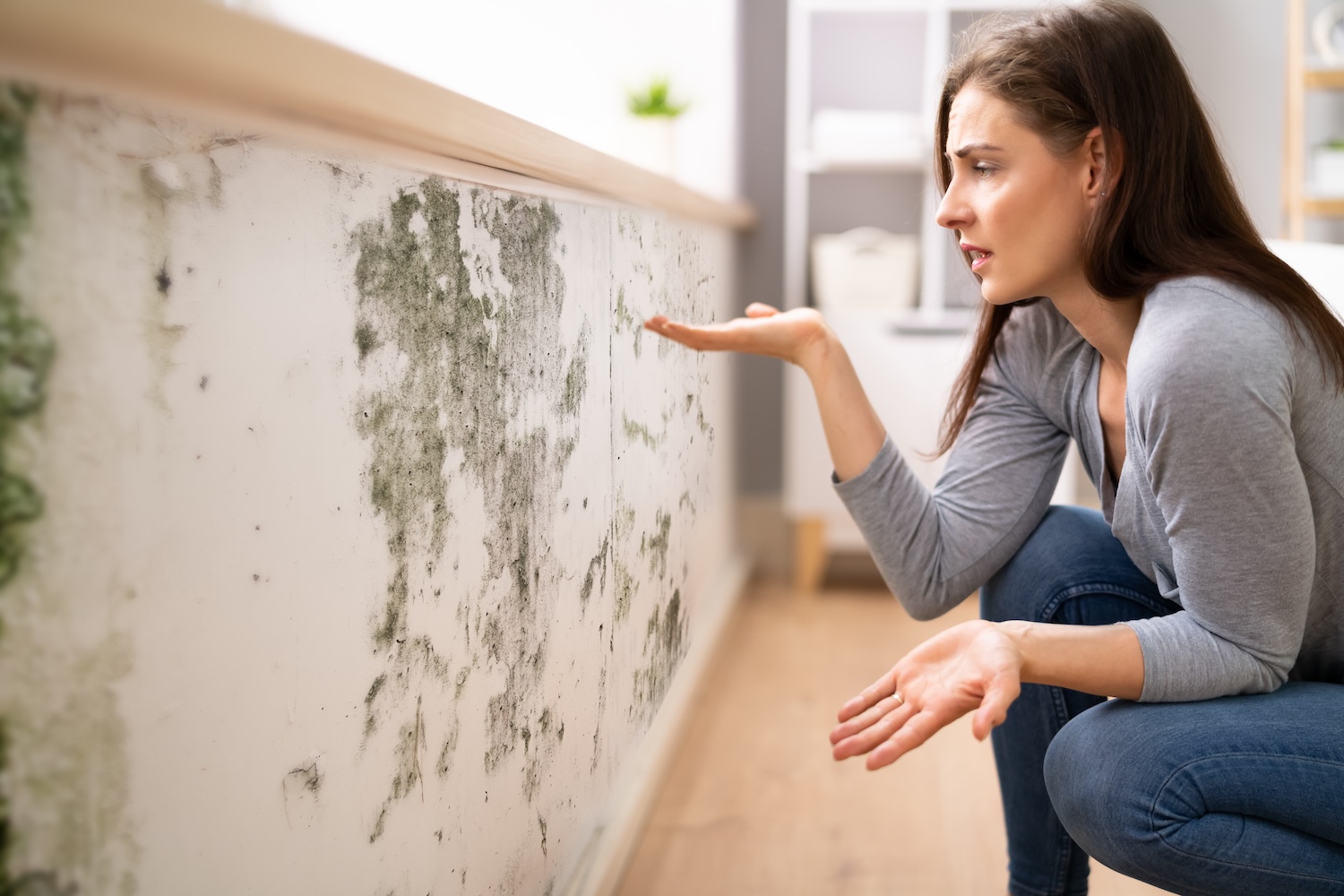The Insurance Information Institute (III) reports that between 2018 and 2022, there were about 1.61 water damage claims for every 100 insured homes annually. With the average claim coming in at $13,954, it’s clear that water damage restoration costs can add up fast.
Water won’t just stay in one location. It can spread and destroy furniture, personal belongings, and even seep into your home’s structure. What starts as a single wet room can quickly become a bigger and more expensive problem.
Knowing the early signs of residential water damage and what factors drive up restoration costs can help you proactively protect your home.
Common Causes of Water Damage in Homes
In Los Angeles and across Southern California, water damage typically comes from two main sources: infrastructure issues and natural disasters.
Common infrastructure-related causes include:
- Plumbing issues like leaks, burst pipes, or sewage backups
- Roof damage or poor drainage systems
- Appliance failures, including broken water heaters, leaking refrigerators, or faulty dishwasher seals
Environmental disasters can also lead to water damage, especially in this region. The biggest threats are:
- Intense rainstorms and flash flooding
- Earthquakes that break underground water or sewage lines
- Wildfires that damage plumbing systems or melt parts made from plastic or PVC
Why the Type of Water Involved Matters
Not all water damage is the same. The severity of the situation depends on how much water has entered the home and how dangerous that water might be to your health.
When assessing water damage in a home, property restoration experts refer to the standards set by the Institute of Inspection, Cleaning and Restoration Certification (IICRC).
According to ANSI/IICRC S500, water is classified by category and class. Water category defines contamination levels, whereas the class is a definition of quantity and saturation. Professionals use their assessments of the water category and class to make preliminary repair and restoration cost estimates.
Water Categories (Health Risks)
- Category 1. Also called clean water, it comes from sanitary sources and poses no major health risks. Examples include water leaking from a main water line, an overflowing sink with no soap or contaminant, or rainwater seeping from a leaky roof. Failing to promptly address water damage caused by Category 1 water can contaminate it and change its category.
- Category 2. This category refers to gray water, which is contaminated enough to cause sickness or discomfort. Examples include dishwasher and washing machine discharge, bathwater with soap, and toilet bowl overflow.
- Category 3. This water category, also known as black water, is the most dangerous to human health. They may carry diseases, pesticides, heavy metals, and other toxic substances. Examples include sewage or toilet water backups with feces, flooding from seawater, or water visibly contaminated with mold or hazardous materials.
Water Classes (Saturation):
- Class 1. A moderate amount of water affects only a single room or area within a larger room, with little to no wet carpets or cushions.
- Class 2. A large amount of water has affected an entire room, carpets and cushions included, as long as the level has not risen above 24 inches from the floor.
- Class 3. An even larger amount of water has affected multiple rooms or the entire house, including insulation, walls, and subfloor. Most Class 3 water damage situations are caused by overhead flooding, such as water passing through leaky roofs and ceilings.
- Class 4. Given to homes with special materials with low porosity and requiring longer or special drying techniques, such as flooded hardwood, stone, plaster, brick, or concrete.
Other Factors Affecting Water Damage Mitigation Costs
The amount and contamination level of the water only offer a baseline. Several other factors can influence how serious the damage is and what it will take to repair it.
A property restoration professional will typically look at the following:
- Area affected. The size of the damaged area plays a role in determining the scope of repairs. If multiple rooms are impacted or the water has spread over a large space, it takes more time, equipment, and labor to dry everything out and make repairs. On average, water damage restoration costs per square foot range from $3 to $7.50.
- Source of the water. Identifying where the water came from is usually part of a restoration expert’s inspection process and is included in water damage inspection costs. In some cases, they can address the issue directly. However, if the damage is caused by something more involved, like a plumbing failure or a roof leak, you may need to hire a specialist, such as a licensed plumber or roofing contractor.
- Mold and mildew. If mold or mildew is found in a water-damaged home, it can drive up restoration costs. Professionals must remove any contaminated materials, treat the area to stop the spread, and thoroughly inspect to ensure all growth is gone. On average, mold remediation services add about $10 to $25 per affected square foot, depending on how much mold is present and the type of mold involved.
- Carpeting replacement. In most cases, water-damaged carpet must be replaced, regardless of the water’s class or category. If not removed quickly, moisture trapped in the fibers can grow mold and mildew, driving up restoration costs.
The cost to replace carpet ranges from $1 to $20 per square foot, depending on the material. For instance, replacing a standard 300-square-foot nylon carpet typically costs between $660 and $1,500, depending on your area’s material quality and labor rates. - Drywall and plaster repairs. Most professionals recommend full removal and replacement if drywall or plaster is soaked, cracked, moldy, or the water level has risen above 24 inches. In less severe cases, especially when the water is clean and levels are low, partial repairs might be possible.
On average, drywall repairs due to water damage cost between $600 and $1,550. Plaster repairs tend to be more expensive, averaging around $100 per square foot. If the issue stems from a hidden leak, the water leak in wall repair costs can also include removing sections of drywall to access plumbing and check for mold or structural damage. - Hardwood floor replacement. Property restoration experts may be able to salvage water-damaged hardwood floors if the water is clean and if caught within 48 hours. If the floor is swollen, warped, or has been exposed to gray or black water, it should be replaced. Hardwood flooring replacement can add $6 to 25 per square foot to the total restoration price.
Contact a Property Restoration Expert After a Water Damage Event
At Paul Davis, our home restoration specialists are trained, certified, and fully equipped to handle water damage, mold, and mildew throughout California.
We’ll inspect your home, identify the source of the damage, and provide complete restoration services. Whether the issue is in the basement, attic, or anywhere in between, we’ll make sure every part of your home is properly repaired. If specialized work is needed, like plumbing or roofing, we can coordinate with trusted local experts to get it done right.
Want to learn more about protecting your property? Check out our blog or contact us today to schedule a water damage restoration service.
FAQs
What is the main difference between mold and mildew?
Mildew usually appears as a gray or white powder on the surface of damp areas, like walls or shower tiles. It stays on the surface and is easier to wipe away. Mold, on the other hand, tends to be green or dark in color, has a fuzzy or slimy texture, and often grows deeper into walls, floors, and other materials.
How do I know if I have mold or mildew?
Contact a mold remediation professional. They can safely determine whether you have mold or mildew in your home without releasing harmful spores or particles in the air.
Is mildew as harmful as mold?
Generally, no. Mildew isn’t typically hazardous and can be easily cleaned and wiped off. However, people with allergies or respiratory issues should be careful not to approach it, as mildew can worsen symptoms.
Can I remove mold and mildew myself?
DIY mildew removal is generally safe. Soak the affected area with water and a white vinegar solution, then scrub with a brush or microfiber cloth. Never attempt to remove mold yourself; you risk spreading it further in your home.
How can I prevent mold and mildew in my home?
Schedule regular property maintenance inspections, keep bathrooms and kitchens well-ventilated, and repair leaks or plumbing issues. Monitor your home’s humidity levels with a hygrometer (humidity meter) and ensure it is under 50% to reduce the risk of mold growth.






